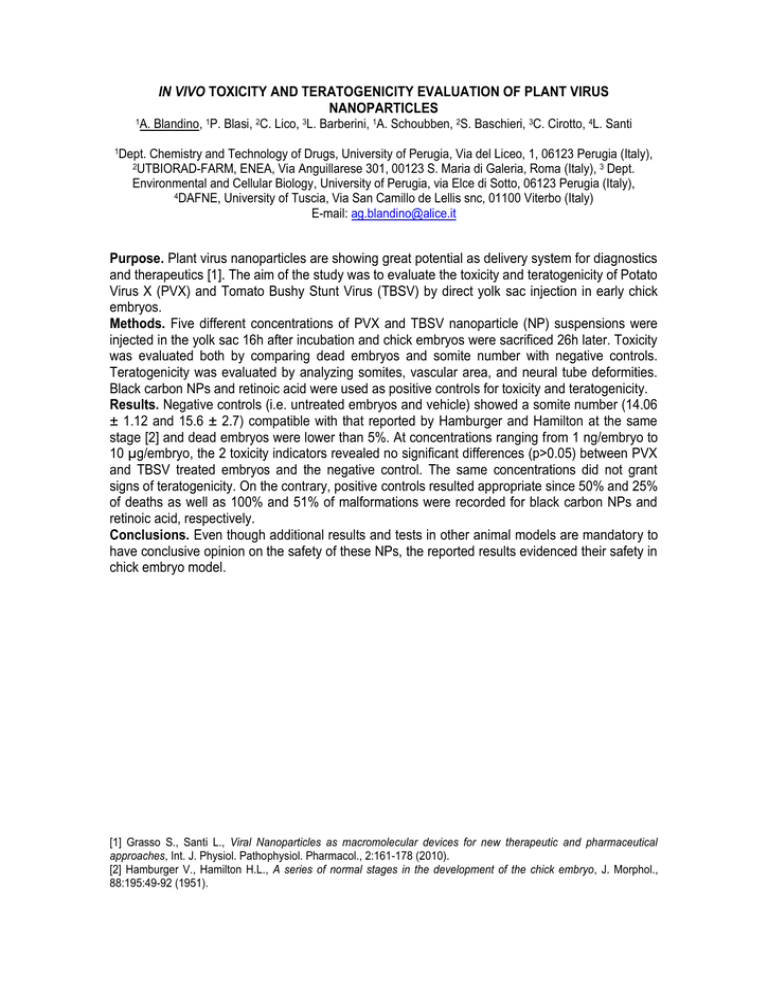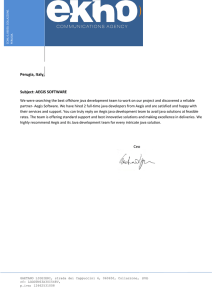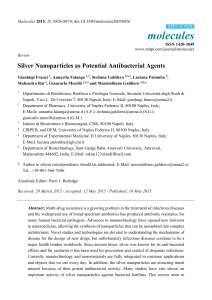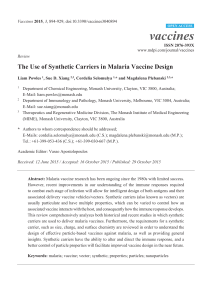
IN VIVO TOXICITY AND TERATOGENICITY EVALUATION OF PLANT VIRUS
NANOPARTICLES
1A.
Blandino, 1P. Blasi, 2C. Lico, 3L. Barberini, 1A. Schoubben, 2S. Baschieri, 3C. Cirotto, 4L. Santi
1Dept.
Chemistry and Technology of Drugs, University of Perugia, Via del Liceo, 1, 06123 Perugia (Italy),
ENEA, Via Anguillarese 301, 00123 S. Maria di Galeria, Roma (Italy), 3 Dept.
Environmental and Cellular Biology, University of Perugia, via Elce di Sotto, 06123 Perugia (Italy),
4DAFNE, University of Tuscia, Via San Camillo de Lellis snc, 01100 Viterbo (Italy)
E-mail: [email protected]
2UTBIORAD-FARM,
Purpose. Plant virus nanoparticles are showing great potential as delivery system for diagnostics
and therapeutics [1]. The aim of the study was to evaluate the toxicity and teratogenicity of Potato
Virus X (PVX) and Tomato Bushy Stunt Virus (TBSV) by direct yolk sac injection in early chick
embryos.
Methods. Five different concentrations of PVX and TBSV nanoparticle (NP) suspensions were
injected in the yolk sac 16h after incubation and chick embryos were sacrificed 26h later. Toxicity
was evaluated both by comparing dead embryos and somite number with negative controls.
Teratogenicity was evaluated by analyzing somites, vascular area, and neural tube deformities.
Black carbon NPs and retinoic acid were used as positive controls for toxicity and teratogenicity.
Results. Negative controls (i.e. untreated embryos and vehicle) showed a somite number (14.06
± 1.12 and 15.6 ± 2.7) compatible with that reported by Hamburger and Hamilton at the same
stage [2] and dead embryos were lower than 5%. At concentrations ranging from 1 ng/embryo to
10 µg/embryo, the 2 toxicity indicators revealed no significant differences (p>0.05) between PVX
and TBSV treated embryos and the negative control. The same concentrations did not grant
signs of teratogenicity. On the contrary, positive controls resulted appropriate since 50% and 25%
of deaths as well as 100% and 51% of malformations were recorded for black carbon NPs and
retinoic acid, respectively.
Conclusions. Even though additional results and tests in other animal models are mandatory to
have conclusive opinion on the safety of these NPs, the reported results evidenced their safety in
chick embryo model.
[1] Grasso S., Santi L., Viral Nanoparticles as macromolecular devices for new therapeutic and pharmaceutical
approaches, Int. J. Physiol. Pathophysiol. Pharmacol., 2:161-178 (2010).
[2] Hamburger V., Hamilton H.L., A series of normal stages in the development of the chick embryo, J. Morphol.,
88:195:49-92 (1951).



